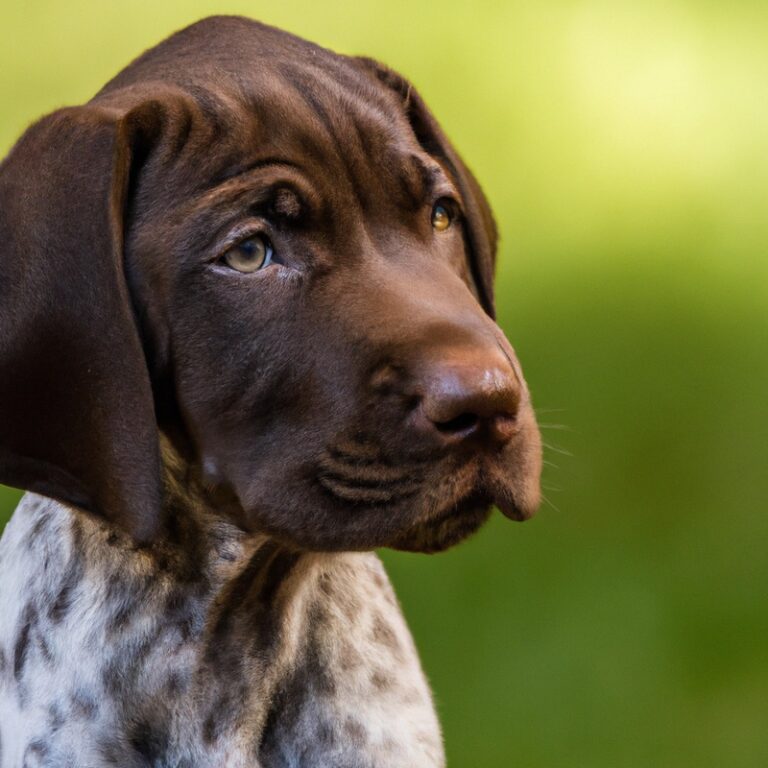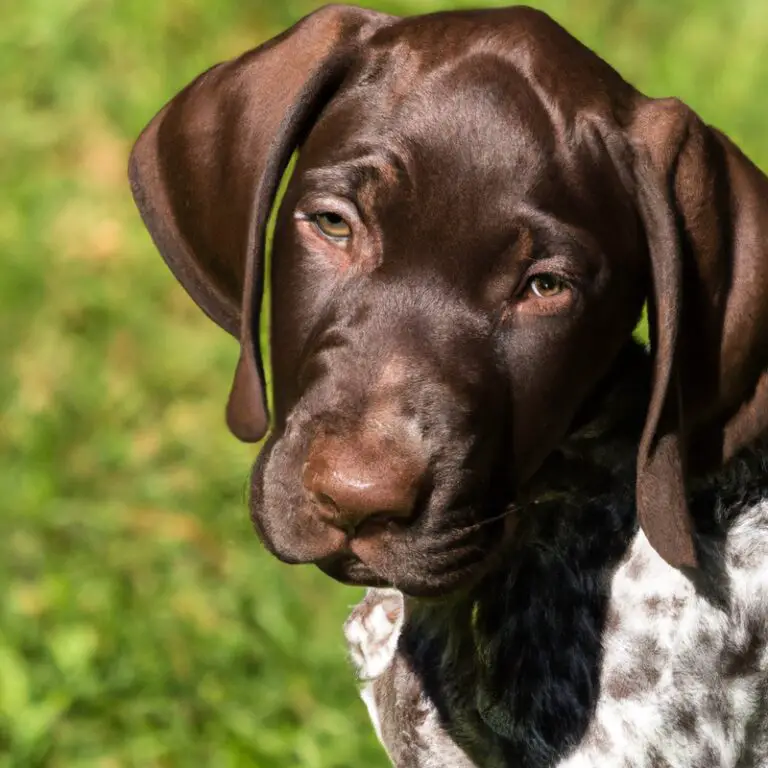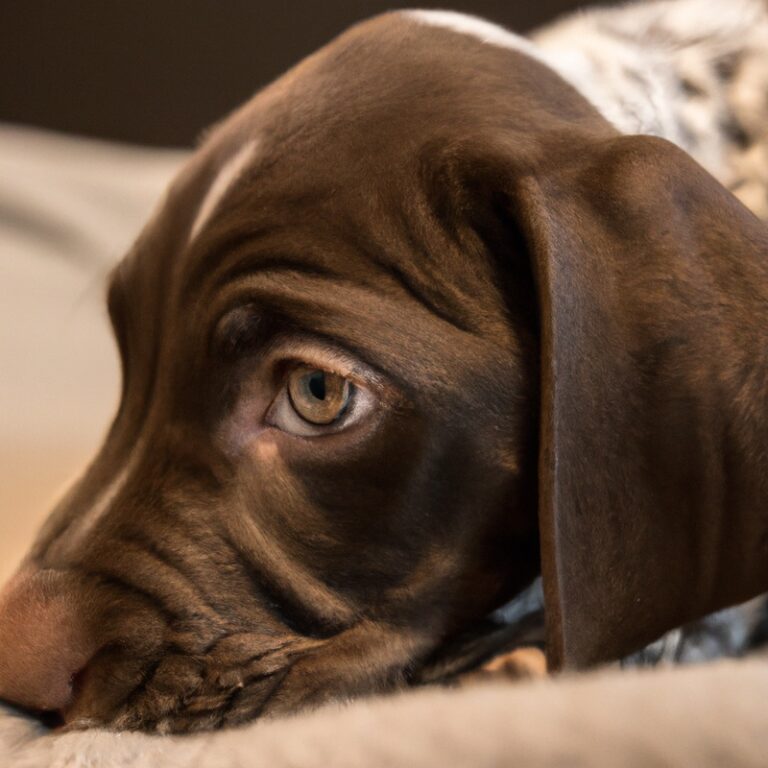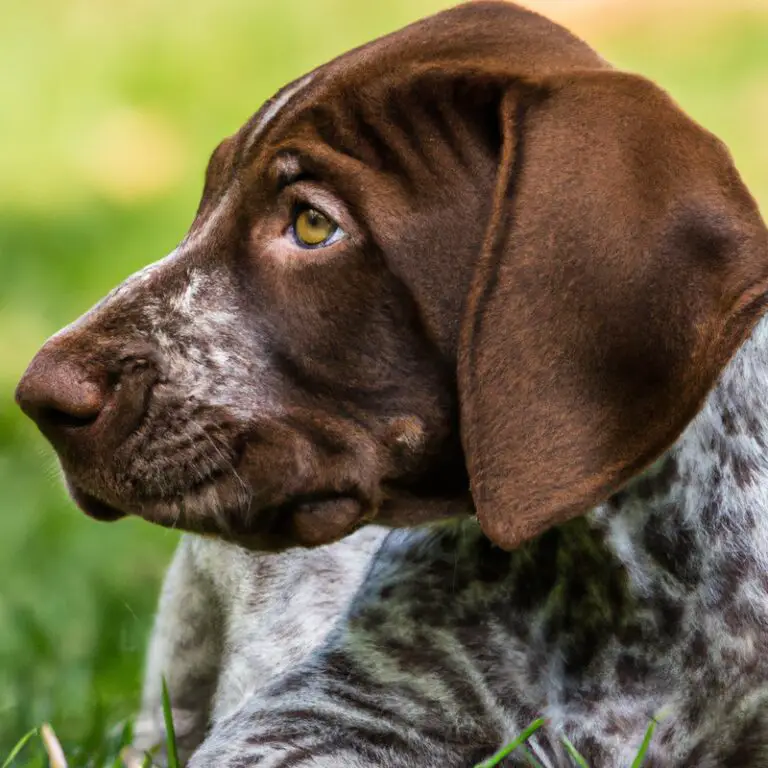How Do I Introduce My German Shorthaired Pointer To New Children In The Family?
Key Takeaways:
- Start introductions gradually and in a controlled environment.
- Teach children to approach the dog calmly and respectfully.
- Supervise all interactions between the dog and children.
- Seek professional help if necessary to ensure a smooth transition.
Have you ever wondered how to introduce your German Shorthaired Pointer to new children in the family? As a dog lover and experienced pet owner, I understand the importance of a smooth and safe introduction.
That’s why I’m here to guide you through the process, step by step.
From understanding the needs of your German Shorthaired Pointer to creating a controlled environment, I’ll provide you with practical tips and advice to ensure a strong bond between your furry friend and the new children in your family. So, let’s dive in and make this introduction a positive and joyful experience for everyone involved!
| Steps | Description |
|---|---|
| 1. | Prepare the environment |
| 2. | Start with controlled introductions |
| 3. | Teach children how to approach the dog |
| 4. | Supervise all interactions |
| 5. | Reinforce positive behavior |
| 6. | Take it slow and be patient |
The Importance of Introducing a German Shorthaired Pointer to New Children
Understanding the Needs of a German Shorthaired Pointer
Understanding the needs of a German Shorthaired Pointer is essential for keeping them happy and healthy. Firstly, these dogs require plenty of exercise.
They are energetic and love to run, so daily walks and playtime are a must.
Additionally, mental stimulation is crucial for their well-being. They are intelligent and thrive on tasks and challenges, so training sessions and puzzle toys are beneficial.
Lastly, GSPs are social animals and need lots of human interaction.
Regular affection, attention, and socialization with other dogs are important for their emotional health. By meeting these needs, you can ensure that your German Shorthaired Pointer leads a fulfilling and contented life.
Preparing the Environment for a Smooth Introduction
Preparing the environment is essential for a smooth introduction between your German Shorthaired Pointer and new children in the family. Here are a few things you can do to create a positive and safe space:
- Clear the space: Remove any potential hazards, such as small objects, toxic plants, or fragile items that could be knocked over. This ensures the safety of both the children and your dog.
- Set boundaries: Create a designated area for your dog, like a crate or a specific room, where they can retreat if they feel overwhelmed or need a break. Teach children to respect this space and not disturb the dog when they are in it.
- Baby gates: Use baby gates to create separate areas for the dog and the children, particularly during the initial introduction phase. This allows them to observe and get used to each other’s presence without direct physical contact.
- Supervision: Always supervise interactions between your German Shorthaired Pointer and the children, especially in the beginning. Observe their body language and intervene if needed to prevent any potential conflicts or accidents.
By preparing the environment in this way, you are creating a safe and controlled space that promotes a positive introduction between your German Shorthaired Pointer and the new children in your family.
Step-by-Step Guide to Introduce a German Shorthaired Pointer to New Children
Start with a Calm and Controlled Environment
Alright, let’s get started on introducing your German Shorthaired Pointer to new children in the family! One crucial aspect of this process is to start in a calm and controlled environment. Remember, creating a peaceful atmosphere will help your dog feel comfortable and relaxed.
So here’s what you can do: First and foremost, find a quiet space where there are minimal distractions.
This could be a room in your house or even the backyard. Make sure the area is secure, so your dog can’t run off.
Next, gather the children who will be meeting your dog.
It’s important to keep the number of people to a minimum initially, as too many new faces can be overwhelming for both your dog and the kids. Now, make sure everyone is calm and composed.
Excitement can agitate your dog, so encourage the children to speak softly and move slowly around the dog.
Allow your dog to approach the children at their own pace. Offer positive reinforcement for calm behavior and gently correct any signs of fear or aggression.
Monitor the interaction closely to ensure the safety of both the children and your dog.

Teach Children Proper Behavior Around the German Shorthaired Pointer
Teaching children proper behavior around a German Shorthaired Pointer is essential to ensure their safety and the well-being of the dog. First and foremost, emphasize the importance of being gentle and respectful towards the dog.
Teach them to approach slowly and avoid sudden movements or loud noises that may startle the dog.
Encourage them to avoid pulling the dog’s ears or tail, and to never disturb the dog while it’s eating or sleeping. Remind children to always ask for permission before petting the dog, and to avoid hugging or kissing it excessively.
By teaching children these guidelines, they can develop a positive and safe relationship with the German Shorthaired Pointer.
Gradually Increase the Interaction Between the Dog and Children
Gradually increasing the interaction between your German Shorthaired Pointer and new children in the family is important for a smooth and positive introduction. Here’s how you can do it:
- Start with supervised visits: Begin by allowing your dog and the children to be in the same room while you supervise closely. This will help them get used to each other’s presence.
- Controlled introductions: Allow the children to offer treats or toys to the dog while ensuring proper guidance. This helps create positive associations between the dog and the children.
- Encourage gentle petting: Teach the children to approach the dog calmly and gently. Show them how to stroke the dog’s back or scratch behind their ears. Supervise to ensure both parties are comfortable.
- Promote positive interactions: As the dog becomes more comfortable, encourage gentle play sessions between them and the children. This can include tossing a toy or playing a game, always under careful observation.
- Keep it short and positive: Gradually increase the duration of interactions, but keep them short and positive. This helps prevent any overwhelming situations and ensures a positive experience for both the dog and the children.

Supervise and Monitor Interactions at all Times
Supervising and monitoring interactions between your German Shorthaired Pointer and new children is crucial for a safe and positive experience. Always keep a close eye on them to ensure everyone’s well-being.
Watch for any signs of discomfort or fear from either the dog or the children and intervene if necessary.
Stay within arm’s reach to quickly address any potential issues.

Tips for Building a Strong Bond Between a German Shorthaired Pointer and Children
Encourage Gentle and Positive Interactions
Encouraging gentle and positive interactions between your German Shorthaired Pointer and new children in the family is crucial for building a strong bond. First and foremost, always supervise their interactions to ensure safety for both the dog and the children.
Teach the children to approach the dog calmly and gently, avoiding sudden movements or loud noises that may startle the dog.
Remind them to never pull on the dog’s ears or tail, and to avoid hugging or squeezing the dog too tightly. Instead, encourage them to pet the dog gently on its back or under the chin, as these are areas most dogs enjoy.
Reward both the dog and the children for their gentle and positive behavior.
Praise and treats can be used to reinforce these interactions. Over time, with patience and consistency, a wonderful bond can develop between your German Shorthaired Pointer and the children in your family.
Involve Children in Caring for the Dog
If you want to build a strong bond between your German Shorthaired Pointer and your children, one effective way is to involve the children in caring for the dog. This not only teaches them responsibility but also helps foster a sense of companionship and connection with the dog.
Here are a few simple ways to involve children in caring for their furry friend:
- Feeding: Let your children take turns feeding the dog. Teach them how much and how often to feed, ensuring they understand the importance of a balanced diet.
- Walking: Encourage your children to join you on walks with the dog. Make it a fun activity where they can take turns holding the leash, helping to exercise the dog while spending quality time together.
- Grooming: Teach your children the proper way to groom the German Shorthaired Pointer, such as brushing their coat and cleaning their ears. This not only keeps the dog looking good but also helps in establishing a bond between them.
- Training: Involve the children in basic obedience training sessions. Simple commands like “sit” or “stay” can be taught with supervision. This not only makes the dog obedient but also empowers the children with a sense of accomplishment.
By involving children in caring for the German Shorthaired Pointer, you create opportunities for them to learn and bond with the dog. It’s a win-win situation where both your children and the dog benefit from the experience.
Provide a Safe Space for the Dog and Children to Interact
First and foremost, it is essential to provide a safe space for your German Shorthaired Pointer and children to interact. This means creating an environment where both the dog and the children feel comfortable and secure.
Make sure there are no hazards such as loose wires or small objects that the dog or children could swallow.
Remove any aggressive toys or items that may provoke the dog. Set up a designated area where the dog can retreat if they need some alone time.
Supervise their interactions closely to ensure safety for everyone involved.
Creating a safe space will help build a positive bond between your dog and the children.
Seek Professional Help if Needed
If you find that introducing your German Shorthaired Pointer to new children in the family is proving to be a challenge, don’t hesitate to seek professional help. Sometimes, the guidance of a professional dog trainer or animal behaviorist can make a world of difference.
They have the expertise and experience to assess the situation and provide you with effective strategies to help your dog and the children feel comfortable and safe around each other.
Common Mistakes to Avoid When Introducing a German Shorthaired Pointer to Children
Rushing the Introduction Process
One important mistake to avoid when introducing your German Shorthaired Pointer to new children in the family is rushing the introduction process. It’s crucial to take your time and go at a pace that is comfortable for both the dog and the children.
First and foremost, make sure to provide a calm and controlled environment for the introduction.
This means removing any distractions and allowing everyone involved to feel relaxed. Instead of rushing, take small steps and gradually expose your dog to the children.
Start by allowing them to observe each other from a distance, and then gradually bring them closer together.
During this process, it’s vital to closely monitor their interactions and ensure that they are positive and respectful. Encourage the children to be gentle and avoid any rough play.
Overlooked Training and Socialization
One aspect that is often overlooked when introducing a German Shorthaired Pointer to new children in the family is training and socialization. While it may seem like common sense, many people forget or underestimate the importance of proper training and socialization for their furry friends.
First and foremost, training is crucial for a German Shorthaired Pointer to understand boundaries and commands.
By incorporating consistent training techniques, such as positive reinforcement and basic obedience commands, you can help your dog understand how to behave around children and in different situations. This will ensure a safer and more enjoyable experience for everyone involved.
Additionally, socialization is key for a German Shorthaired Pointer to become comfortable and well-behaved around children.
By implementing gradual exposure to new people, including children, your dog can learn to interact appropriately and confidently in various social settings.
Lack of Supervision and Monitoring
Lack of supervision and monitoring is a common mistake when introducing a German Shorthaired Pointer to children. It’s important to always be present and attentive during these interactions.
Leaving children alone with the dog can lead to unexpected behavior or accidents.
Keeping a close eye on both the dog and the children ensures their safety and allows you to intervene if necessary.
Ignoring the Dog’s Body Language
One crucial aspect to consider when introducing your German Shorthaired Pointer to new children in the family is to never ignore the dog’s body language. First and foremost, it is essential to pay close attention to how your dog is communicating through their body movements, facial expressions, and tail wagging.
By disregarding or misinterpreting their signals, you may unintentionally put both the dog and the child in potentially risky situations.
Final Verdict
Introducing a German Shorthaired Pointer to new children in the family requires careful preparation, patience, and attention to detail. By understanding the needs of the dog, creating a calm environment, teaching proper behavior, and gradually increasing interactions, a strong bond can be formed between the dog and children.
It is important to encourage gentle and positive interactions, involve children in caring for the dog, provide a safe space for interaction, and seek professional help if needed.
Avoid common mistakes such as rushing the process, overlooking training, and ignoring the dog’s body language. By following these guidelines, you can ensure a safe and harmonious relationship between your German Shorthaired Pointer and the children in your family.
Remember, trust and credibility are the key to success when introducing a new pet into your home.







